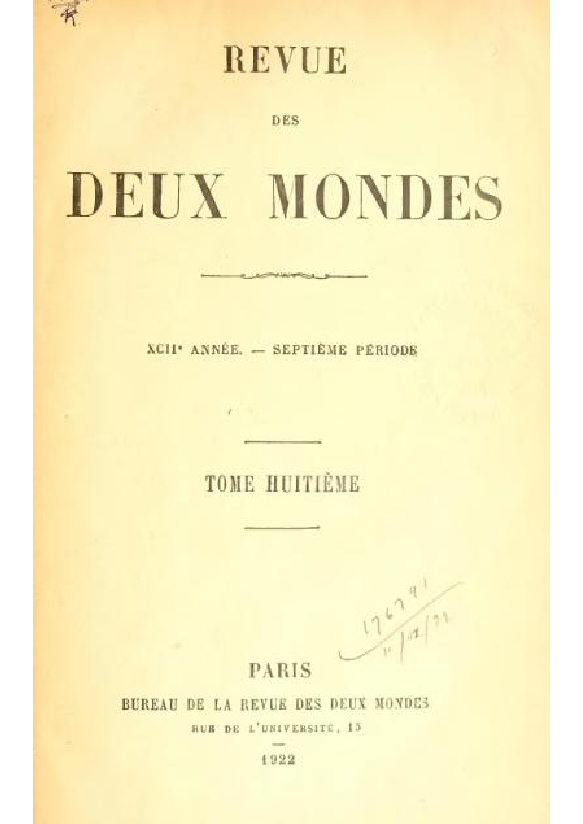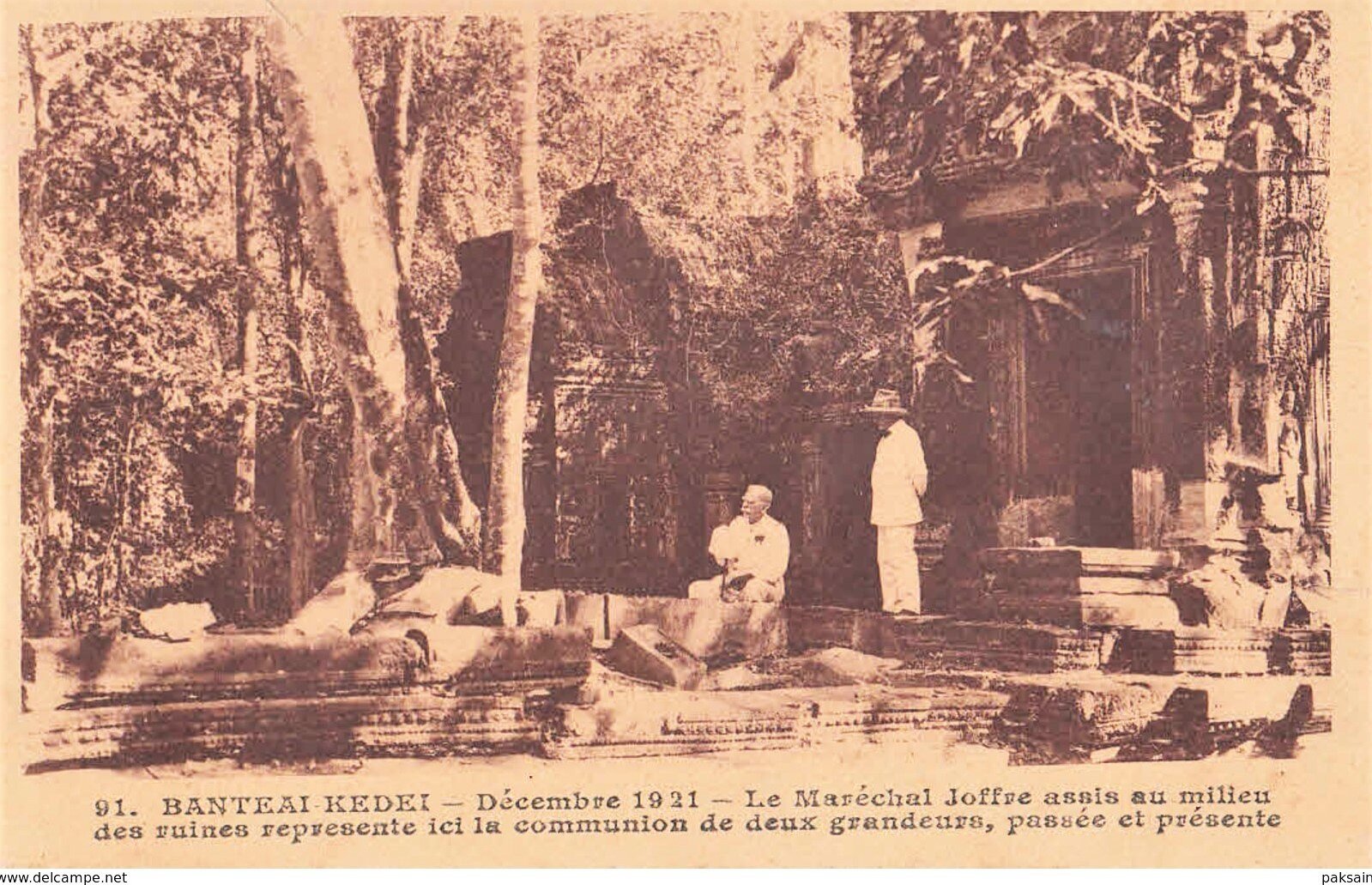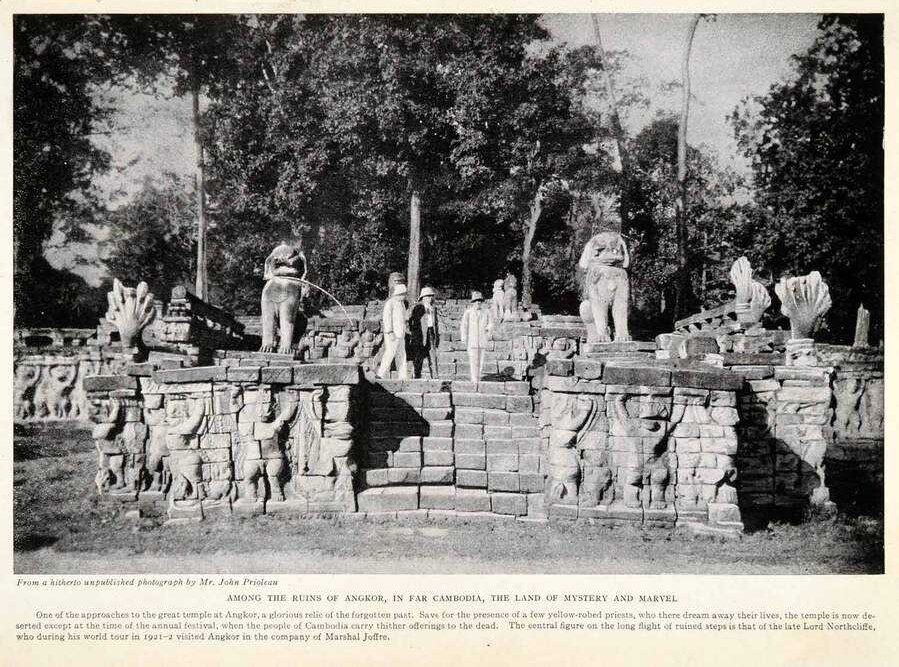Avec le Marechal Joffre en Extreme-Orient: Indochine et Siam | Marshal Joffre's visit to Indochina, Dec. 1921
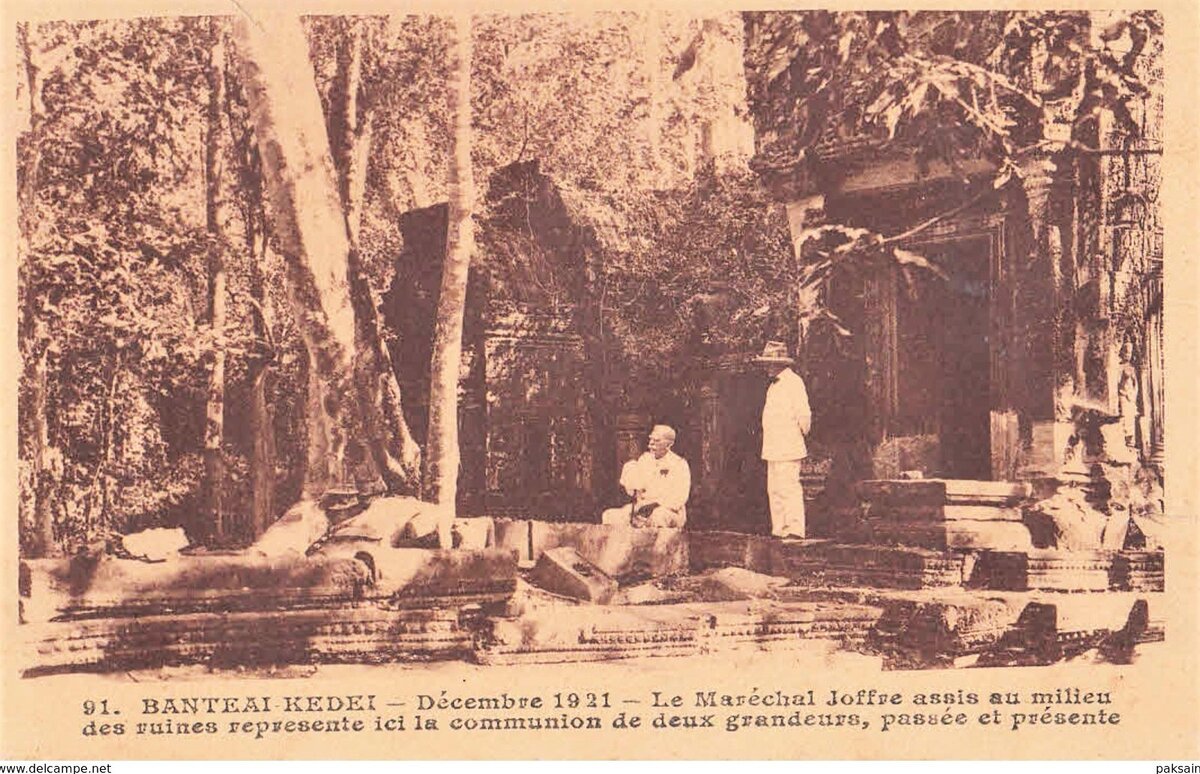
- Publication
- Revue des Deux Mondes, 7eme periode, t. 8, pp 575-595 | digital version on Wikisource
- Published
- 1922
- Pages
- 36
- Language
- French
pdf 286.3 KB
Arrived in Phnom Penh on 13 Dec. 1921 from Saigon with his family and entourage, the French “héros de la Grande Guerre” (World War I heroe) Maréchal (Marshal of France) Joseph Joffre (12 Jan. 1852, Rivesaltes — 3 Jan. 1931, Paris) visited Angkor from 15 to 18 Dec. 1921 before leaving for Bangkok and the rest of his diplomatic journey, the Mission Joffre en Extreme-Orient, which also took him to Japan, China and Korea.
Officially, the Mission was designed to acknowledge the diplomatic efforts of future Japanese Emperor Hirohito, who had visited Europe after the War, visiting Verdun in June 1921 to pay tribute to the victims of the world conflict. Maréchal Joffre, who had traveled to the USA in 1916 to plead for a more active American involvement in the war, was this time acting as a “symbol of France grandeur” more than as a military commander.
In Angkor, Joffre was joined by the British press magnate Lord Northcliffe (Alfred Harmsworth,15 Jul. 1865 – 14 Aug.1922), who was on a personal world tour in spite of his ailing health and also served as unofficial representative of the British interests.
The report in the popular French journal Revue des deux mondes describes the fastuous reception organized by King Sisowath of Cambodia on the site of Angkor, including a performance by the Royal Ballet dancers and a parade with elephants.
Maréchal Joffre (sitting) at Banteay Kdei (Postcard, collection Delcampe.net)
Lord Northcliffe (center) in Angkor
In January 2022, exactly one century later, Kent Davis was kind enough to share with us this photograph of George Groslier’s family stepping out of the then Musée Albert Sarraut to welcome Maréchal Joffre, in January 1922:
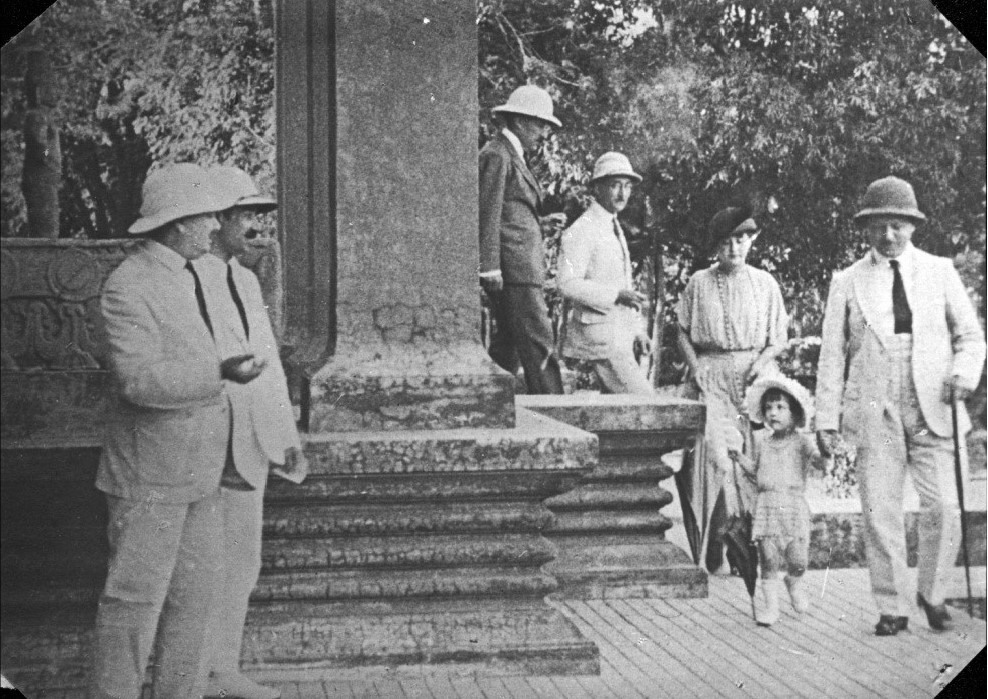
From the left: Auguste André Silice, future director of the School of Cambodian Arts; Jean Stoeckel, a museum associate working with Cambodian textiles; M. Debé; Résident superieur of Cambodia Baudoin; Suzanne Groslier; Nicole Groslier, daughter of George and Suzanne, then aged 4, and George Groslier, founder and first Director ot the Museum (source: Ms. Nicole Groslier for DatASIA).
Tags: French colonialism, dance, architecture

